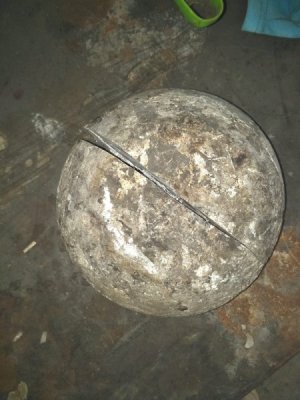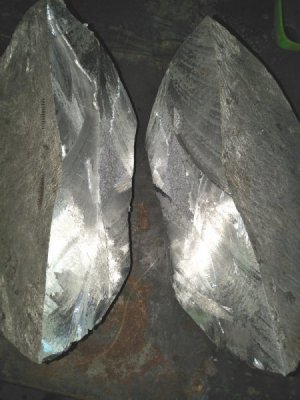- Joined
- Aug 22, 2012
- Messages
- 4,106
A couple of years ago when I first started casting aluminium I used a stainless steel bowl for a crucible and filled it with a mix of unknownium.
dont do this at home kiddies.
This was a bad idea as it developed pin holes and the liquid aluminium started leaking out.
I let it solidify and threw it to the back of the shed.
The outer surface is horrible, pitted, unmelted metal folded over etc etc.

Yesterday I decided to cut it in half so it would fit in a graphite crucible for re melting and was astounded to see the inside, totally homogeneous and solid, no impurities visible by eye.

Maybe I should have turned it into a usable piece.
dont do this at home kiddies.
This was a bad idea as it developed pin holes and the liquid aluminium started leaking out.
I let it solidify and threw it to the back of the shed.
The outer surface is horrible, pitted, unmelted metal folded over etc etc.

Yesterday I decided to cut it in half so it would fit in a graphite crucible for re melting and was astounded to see the inside, totally homogeneous and solid, no impurities visible by eye.

Maybe I should have turned it into a usable piece.

